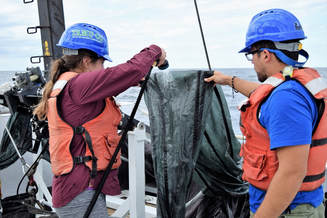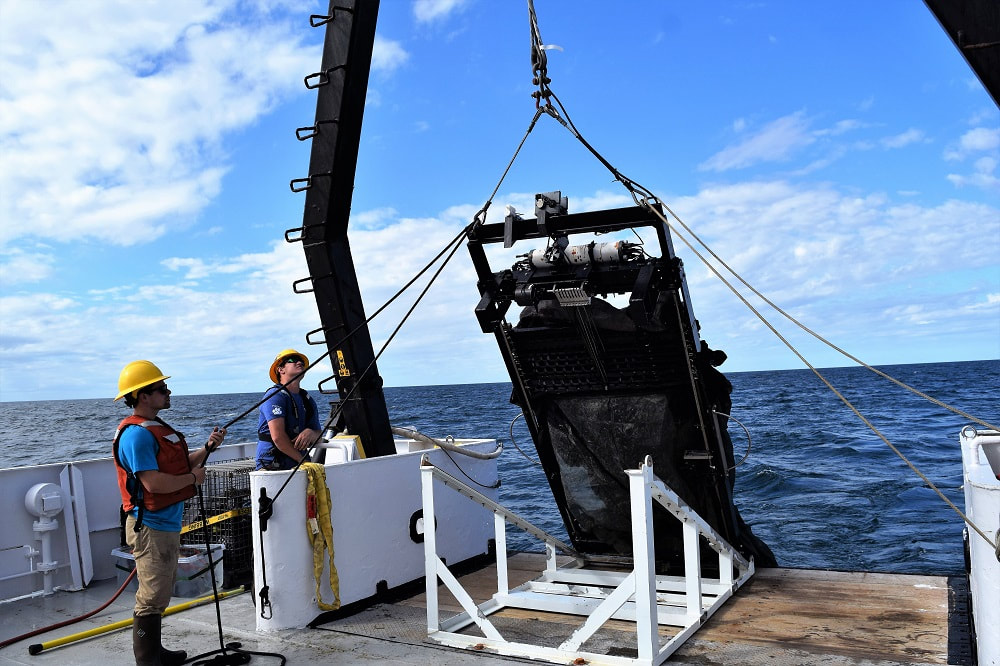 Valeria and Cristian help collect samples from one of the MOCNESS nets (photo by Kate Thompson) Valeria and Cristian help collect samples from one of the MOCNESS nets (photo by Kate Thompson) Posted by Zach Topor, PhD student in Dr. Kelly Robinson's Lab Just like most people, Monday ushered in the start of our work week. However, rather than scooting a chair up to our desks or classrooms, we began our exploration of the ocean blue. A 05:30 wake up is early, even for morning people. But the anticipation of Station 1 motivated me and I sprung (dragged) myself out of bed for breakfast. With full bellies, a beautiful sunrise on the water (my favorite thing), and lots of optimism, our team started the day. We are out in the Gulf of Mexico, off the coast of Texas to see how flood waters from Hurricane Harvey have affected plankton communities, near- and offshore. Plankton, though tiny, have a great impact on all the food webs in the ocean. Everything starts with (or in) the plankton. And that makes it really exciting to study. This cruise is especially important to me because the data and samples that we collect will be contributing to my dissertation research on plankton community ecology. Station 1 marked the beginning of our sampling journey. On this cruise, we are deploying three types of nets to collect zooplankton at each station. Zooplankton are little animals and larvae in the ocean, drifting along in the currents. These include things like krill and copepods, fish larvae, and jellyfish. The net that collects the majority of my samples is called the Multiple Opening/Closing Net and Environmental Sensing System or MOCNESS for short. This system has ten (!) nets with remote controlled openings so that we can discretely sample zooplankton at different depths, all during one tow. With each net, we get a snapshot of the zooplankton community from that specific depth. I am really excited to find out what is happening down there. Even with a few procedural hiccups and some temperamental machinery (all expected on the first day), day 1 was a great success. Day 2 went smoothly (even if the seas weren’t) and our team worked really well together. So far we’ve had beautiful weather, cooperative seas, and a great team effort (not to mention, lots of plankton!!!). And I, for one, am looking forward to the sunrise tomorrow.
1 Comment
Jannette Morris
11/2/2017 05:14:46 pm
Such important and fascinating work- I loved reading this post! :)
Reply
Your comment will be posted after it is approved.
Leave a Reply. |
AuthorsMembers of the Stauffer Lab in the Dept. of Biology at UL Lafayette. Check out the byline for specific blog post author information! Archives
March 2018
Categories |
Proudly powered by Weebly


 RSS Feed
RSS Feed